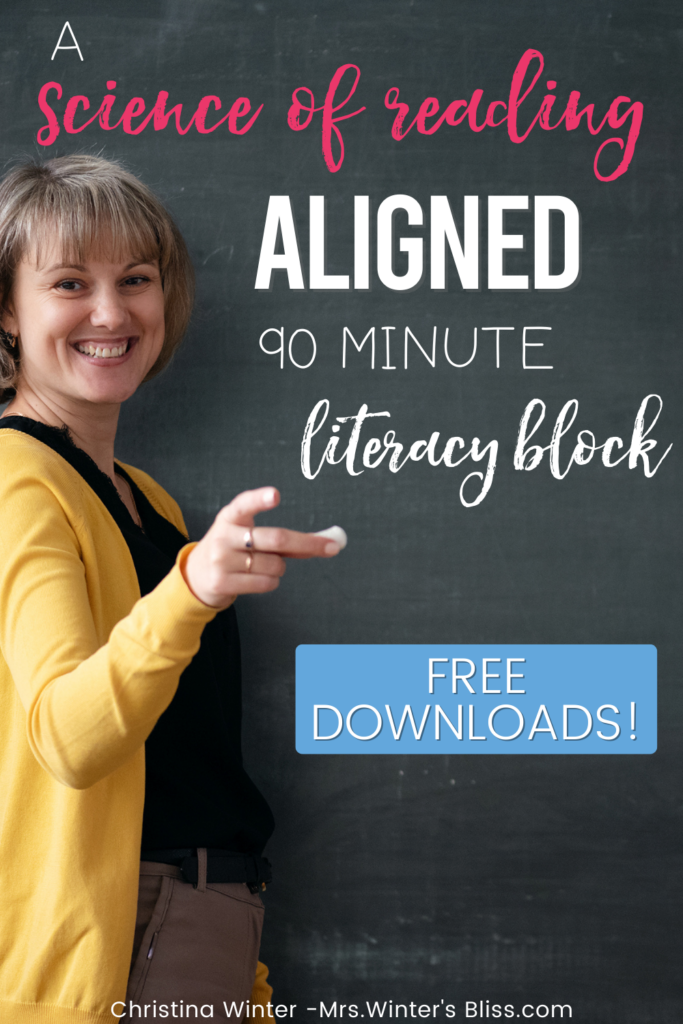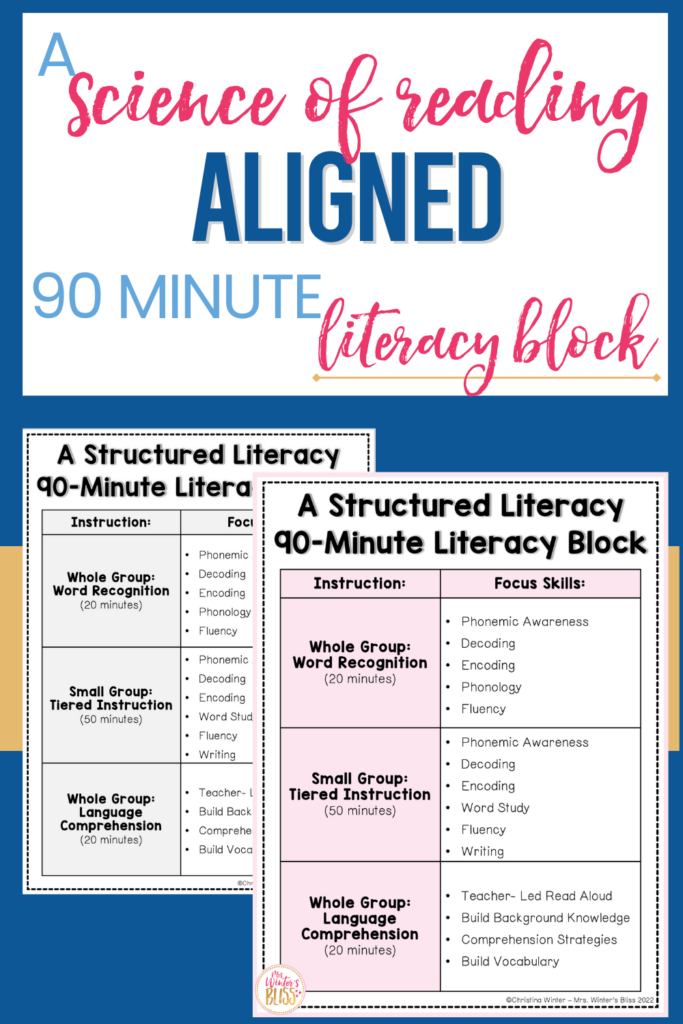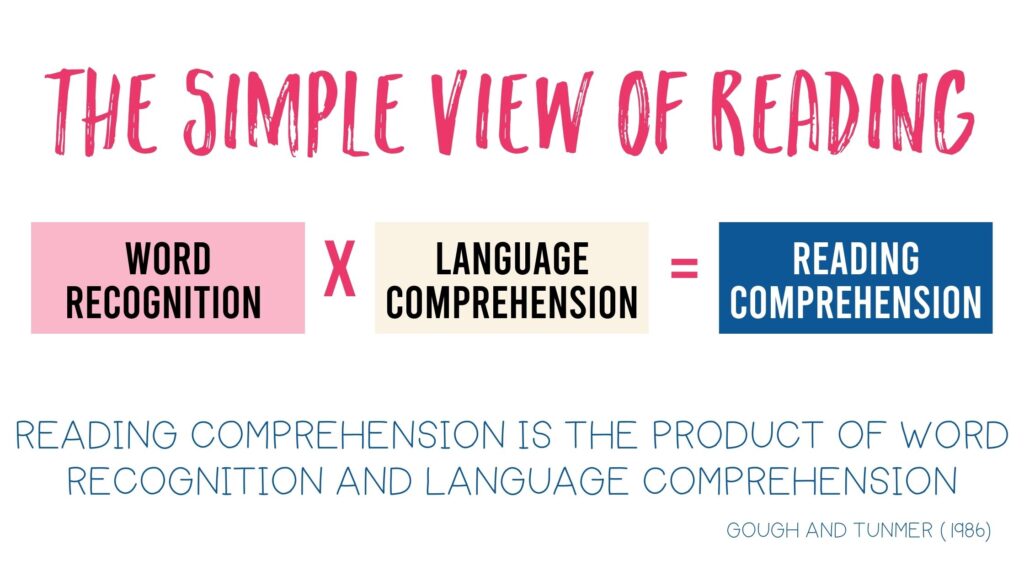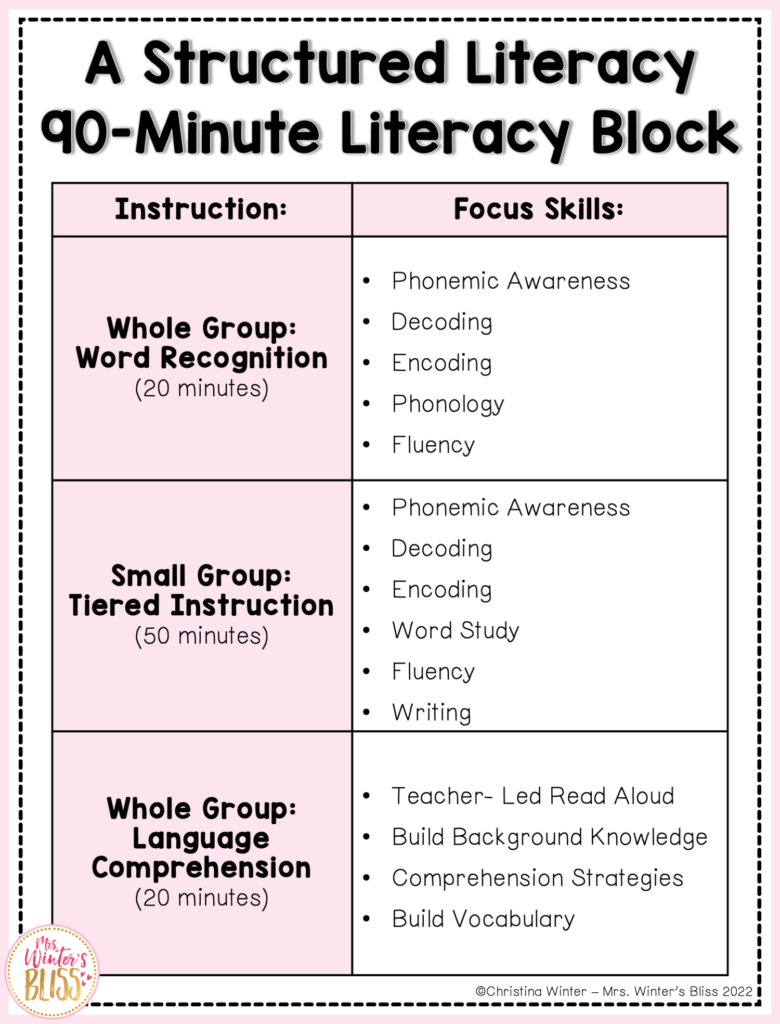

In this post, I offer a 90-minute literacy block schedule aligned to the Science of Reading and can be used in kindergarten, first and second-grade classrooms. The SoR-aligned literacy block is broken up into whole group word recognition instruction, small group instruction, and whole group language comprehension. I explain what skills should be taught in each part of the literacy block and leave you with a FREE downloadable template to help you plan your 90-minute literacy block.
Research shows that ALL students need at least 90 minutes of uninterrupted reading instruction each day to become strong readers. This instructional time must be systematic, explicit, scaffolded, and differentiated. I hear from many teachers who are told they need to spend 90 minutes on literacy but they aren’t told what to do with that time or how to structure it! I frequently get asked the question, “What should I be doing in my 90-minute literacy block?”

Today I am excited to begin sharing a series of blog posts that will help to answer that question. In this first post, I outline a suggested schedule for your 90-minute science of reading-aligned literacy block. This framework can be used in kindergarten, first and second-grade classrooms.
Skills to Teach During Your 90-Minute Literacy Block
The Simple View of Reading tells us that Word Recognition x Languange Comprehension = Skilled Reader.

Therefore, it is essential we use the 90 minutes to provide students with explicit and systematic instruction and practice with the following skills:
- Oral language
- Phonemic awareness
- Phonics
- Fluency
- Vocabulary
- Comprehension
To provide instruction on all of these skills, I suggest splitting up your 90-minute block into three separate parts. My preference is to do 20 min block, 50 min block, and another 20 min block. You can tweak those minutes based on the needs of your students, your schedule, or the requirements of your school.
Let’s take a closer look at what to do in each part of your literacy block….
Block #1: 20 Minutes of Whole Group Word Recognition Instruction
To start your literacy block, gather students in your meeting for 20 minutes of whole-class word recognition instruction. During this time you will focus on phonemic awareness, decoding, encoding and fluency. You can begin by reviewing previously learned material and then introduce the new reading/spelling pattern you are focusing on that week. Offer guided practice opportunities and monitored independent practice with that skill. This is also a great time for dictation practice.
Learn more about Whole Group Word Recognition Instruction in this blog post. In the post, I provide a schedule for your whole group instruction and identify specific literacy skills to teach during this time and SoR-aligned resources to help you do so.
Block #2: 50 Minutes of Small Group Instruction and Literacy Centers
After your whole-group word recognition instruction, you will transition to a 50-minute block where you will provide students with targeted, small-group instruction. Your small group groupings should be based on data from a universal screening, not based on assumptions. Use weekly progress monitoring and observation to adjust your groups. They should be flexible. As needs change, groups change.
In the group, you will provide students with the targeted remediation and review they need to master the skill you have identified as their need. Skills you will work on in small groups include:
- Phonemic awareness
- Phonics
- Fluency
- Vocabulary
- Comprehension
You may be left wondering, “what do my other students do while I am working with my small group?” The answer is they are engaging in intentional literacy center activities that reinforce skills you have already taught. Wiley Blevins tells us that in order for a skill to stick, it must be purposefully and systematically reviewed for 4-6 weeks. Centers offer students the practice and review they need to master the skills we teach.
If you are curious to learn more about small group instruction and literacy centers, take a look at this blog post. In it, I discuss why small group instruction is important and explain how to group your students for small group instruction. I identify literacy skills to teach in small group and offer a list of science of reading-aligned resources designed for small group instruction. Finally, I leave you with a FREE, downloadable small group lesson planning template for kindergarten, first or second grade.
Block 3: 20 Minutes of Whole Class Language Comprehension
For the final 20 minutes, bring the students back to the meeting area and focus your instruction on language comprehension. During this time, you can build background knowledge, develop oral language, build vocabulary, and teach language structures, and comprehension skills through your read-aloud.
To learn more about this part of the 90-minute literacy block, take a look at this blog post. In it, I identify which skills you should teach during your language comprehension instruction and offer suggestions for activities you can do to teach those skills.

To help you plan your 90-minute block, I am happy to offer you this FREE download>> 90-minute structured literacy block planning template.
When Do I Teach Writing?
This framework does not include a specified time for writing and handwriting instruction but writing practice is naturally woven in. Students should get practice with writing in the word recognition block of instruction. Research shows us that students learn letter-sound relationships and spelling as they write. They can also get practice with writing in small groups and through the literacy center activities you choose.
If time allows, I do recommend using 20 or so minutes after your language comprehension instruction to focus on writing. This is a good time to do it because as students get older their writing becomes more connected to the reading and read alouds that take place during that time.
I hope that the information I have shared in this post helps to provide you with a framework for how to structure your literacy block. Be on the lookout for the next post in this series that will focus on SoR-aligned small group instruction. I will explain what you should do with your small groups, what other students should be doing while you work with your small group, and offer you resources to help you do it all with ease!
–PIN for LATER–










